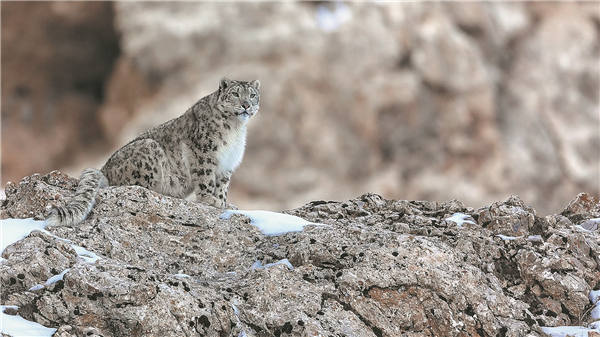

The other two have experienced complete periodic satellite tracking and observation. So far, the two snow leopards have sent back a total of 1,660 items of positioning data from their tracking collars, with an activity area of 13.8 sq km and 42 sq km, respectively.
Ten days after releasing them, one of them was found in the wild, nursing two cubs, and the carcass of a Himalayan blue sheep Pseudois nayaur was found nearby. This crucially indicated that it was hunting normally with the collar.
Wang claims that obtaining accurate information on the snow-leopard population, its distribution, the individual life history of the cats, as well as their reproduction and survival habits, significantly promotes biodiversity conservation, as well as the construction and management of the national park.
By tracking snow leopards, Wang's team found that the density of the snow leopard population in the southern foothills of the Qilian Mountains, which are in the transition zone between the Qinghai-Tibet Plateau and the Hexi Corridor, was much higher than expected.
The findings of the research are also refreshing Wang's perception of snow leopards. Wang, who has had many chance encounters with snow leopards during his yearlong observation, proudly proclaims that there has never been a precedent of snow leopards actively attacking humans. He recalls that once he made tense, but generally friendly, contact with a snow leopard that he encountered at a rather close distance.
"When I got close to the snow leopard, it would stretch its paws out, show its teeth to me and it let out a low growl. I stopped moving closer and just stood still staring at it. After a while, it suddenly laid down and started washing its face with its outstretched paws as if to relieve its anxiety," Wang says excitedly.
"It seems that the public perception is that the snow leopard is a fierce beast, but on the contrary, the snow leopards that I saw always move with grace and show a confident and comfortable posture, giving me the deep feeling that they are the real masters of their natural ecosystem."